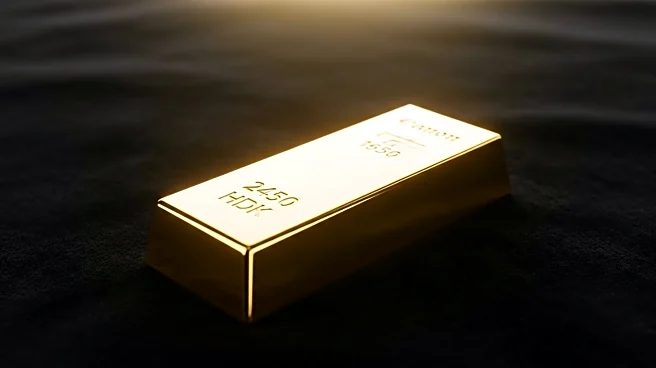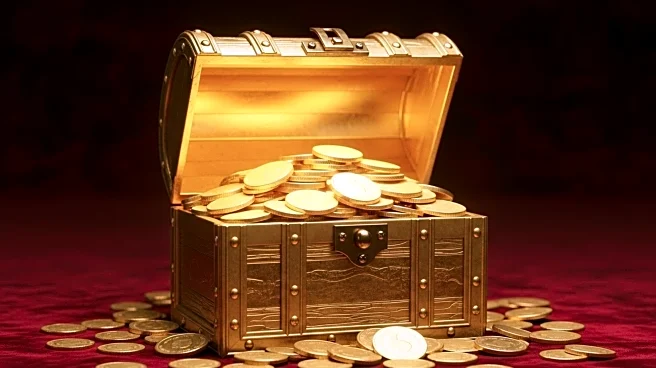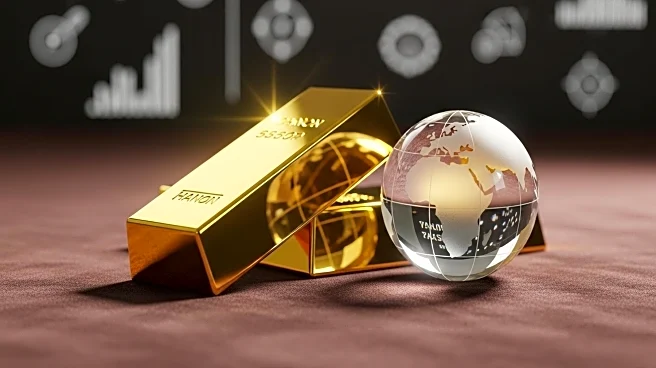What's Happening?
Gold prices have surged past $4,000 per ounce for the first time, marking a significant milestone in the precious metals market. This increase represents a 50% year-to-date rally, driven by safe-haven buying amid economic and geopolitical uncertainties. Silver has also seen a dramatic rise, reaching approximately $50 per ounce, its highest level since 2011. The rally in precious metals is attributed to factors such as potential U.S. government shutdowns, global conflicts, and expectations of Federal Reserve rate cuts. Central banks have been purchasing gold at record levels, while silver benefits from strong industrial demand and a supply deficit.
Why It's Important?
The surge in gold and silver prices highlights the growing investor concern over economic stability and geopolitical tensions. Precious metals are traditionally seen as safe-haven assets, and their rising prices reflect a shift in investor sentiment towards tangible stores of value. This trend could have significant implications for the U.S. economy, as it may indicate waning confidence in traditional financial systems and currencies. The increased demand for gold and silver could also impact industries reliant on these metals, such as electronics and solar energy, due to higher costs.
What's Next?
Analysts are divided on the future trajectory of gold and silver prices. Some predict a potential crash, with prices possibly falling up to 50% in the coming months, while others remain optimistic about continued growth. Factors such as geopolitical developments, central bank demand, and U.S. interest rates will play crucial roles in determining the direction of the precious metals market. Investors should brace for potential volatility, as profit-taking and market jitters could lead to price fluctuations.
Beyond the Headlines
The current rally in precious metals may signal a broader shift in investor behavior, as traditional safe havens like the U.S. dollar and Treasuries face challenges. This could lead to long-term changes in how investors perceive risk and value, potentially altering the landscape of global financial markets. The emphasis on tangible assets may also reflect deeper concerns about trust and sovereignty in the current geopolitical climate.










